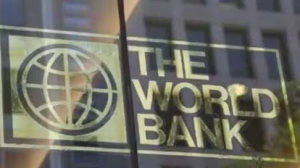GS3 – Indian Economy

- Inequality is a core issue in the political economy of democratic societies.
- In India, the inequality debate often involves selective data use, leading to exaggerated claims and misperceptions.
- The World Bank’s April 2025 report (“India Poverty and Equity Brief”) stirred debate by asserting:
- Extreme poverty is almost eradicated in India.
- Consumption inequality has significantly declined since 2011-12.
- India is among the least unequal countries globally (in terms of Gini coefficient).
World Bank’s Findings: Based on HCES 2022-23
- Uses the Household Consumption Expenditure Survey (HCES) employing Modified Mixed Reference Period (MMRP), aligned with global statistical best practices.
- Accounts partially for free goods and services provided by government.
- Key Findings:
- Consumption-based Gini coefficient fell from 28.8 (2011-12) to 25.5 (2022-23).
- Consumption inequality decreased significantly.
- Consumption baskets became healthier and more diverse across all income levels.
Criticism and Clarification
- Criticism: HCES underestimates inequality by failing to capture elite consumption.
- Valid point, but applies to all survey data globally, not just India.
- Even if the top 5% are underrepresented, for the remaining 95%, consumption inequality has undeniably declined.
Improvements in Living Standards (2012–2023)
- Dietary diversity and nutrition improved:
- Milk ↑ 45%, Eggs ↑ 63%.
- Fresh fruit consumption in rural households ↑ from 63.8% to 90%.
- Poverty reduction (based on Tendulkar, Rangarajan & NITI Aayog’s MPI):
- 27 crore people pulled out of extreme poverty between 2011 and 2023.
- Asset ownership improvements (among bottom 20% households):
- Pucca homes and paved roads expanded under PM Awas and PMGSY schemes.
- Vehicle ownership ↑ from 6% (2011) to 40% (2023).
- These allow better mobility and part-time urban work without full migration.
Income Inequality vs Consumption Inequality
Limitations in Income Data
- No official income survey in India.
- Media relies on World Inequality Lab (WIL) estimates using:
- Income tax data for top earners.
- Old consumption data + assumptions to estimate income for lower-income groups.
- Problematic assumption: 70-80% households spend more than they earn year after year – implausible.
- This leads to underestimation of income for bottom 80% and overestimation for top 1%.
WIL Estimates Even Show Mild Improvement
- Bottom 50% share of income ↑ from 13.9% (2017) to 15% (2022).
- Top 10% share ↓ from 58.8% to 57.7%.
- Top 1% share ↑ only by 0.3 percentage points.
- Part of this rise is due to better tax compliance, not actual rise in inequality.
Pre-Tax vs Post-Tax Realities
- WIL data is pre-tax, whereas post-tax + post-subsidy income matters more.
- In AY 2023-24:
- Top 1% of taxpayers paid 72.77% of total tax.
- In individual category, top 1% paid 42% of income tax.
- Welfare transfers to bottom groups are 8% of GDP, raising effective income.
- When adjusted for taxes and subsidies, income inequality has likely declined.




